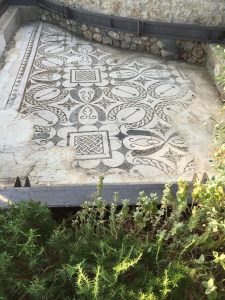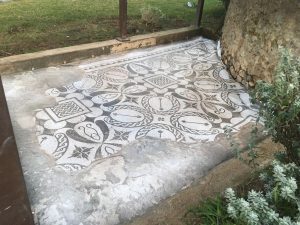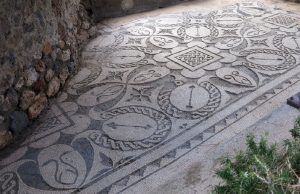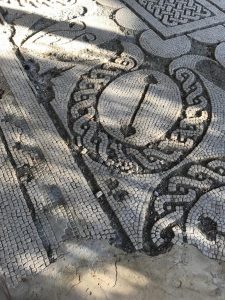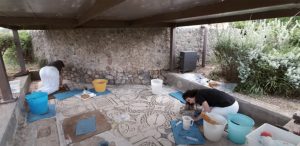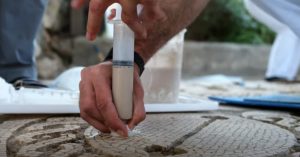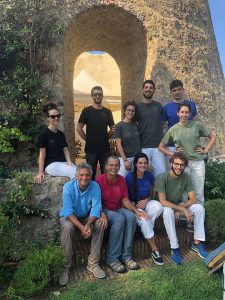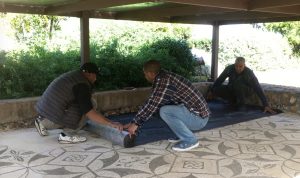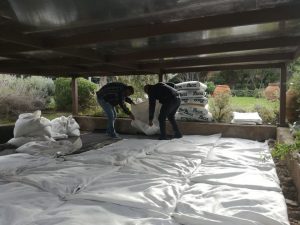During September and October 2019, CCA Roma carried out the conservation program of the Roman mosaics of the Domitii Ahenobarbi Roman complex.
The Domitiana Positio indicates a natural landing, then transformed into a residential and productive building from the powerful gens Domitia around 50 BC. The latest descendant of this family of prominent patricians, consuls and bankers (argentarii) was the Emperor Nero, whose real name was Lucius Domitius Ahenobarbus. The complex was articulated on the promontory of Santa Liberata, in the Gulf of Porto Santo Stefano in the province of Grosseto, Italy. The Domitiana Positio is mentioned by a single ancient source, the Itinerarium Maritimum, which places it along a circumnavigation route of the promontory after portus Herculis and Incitaria portus and before the Albinia river landing.
The large complex was composed of a residential quarter, a bathhouse, a fishery, production facilities, warehouses and an equipped landing place. The complex has undergone transformations, destructions and renovations over time and is now divided into two private properties. The easternmost property, now owned by the Rattazzi family, retains part of the original residential structures, the cryptoporticus and the remains of the structures at the sea.
In the 1950s, on the occasion of work on the lawn of the garden surrounding the current Villa Rattazzi, near what remains of the Tower of Santa Liberata built by the Sienese in 1442, portions of three floor mosaics belonging to the residential part of the complex were found. These mosaics testify the life of the Roman villa from late Republican origins to the Hadrianic era.
In 2001 the mosaics were brought to light thanks to a systematic excavation campaign carried out by the Archaeological Superintendence of Tuscany.

